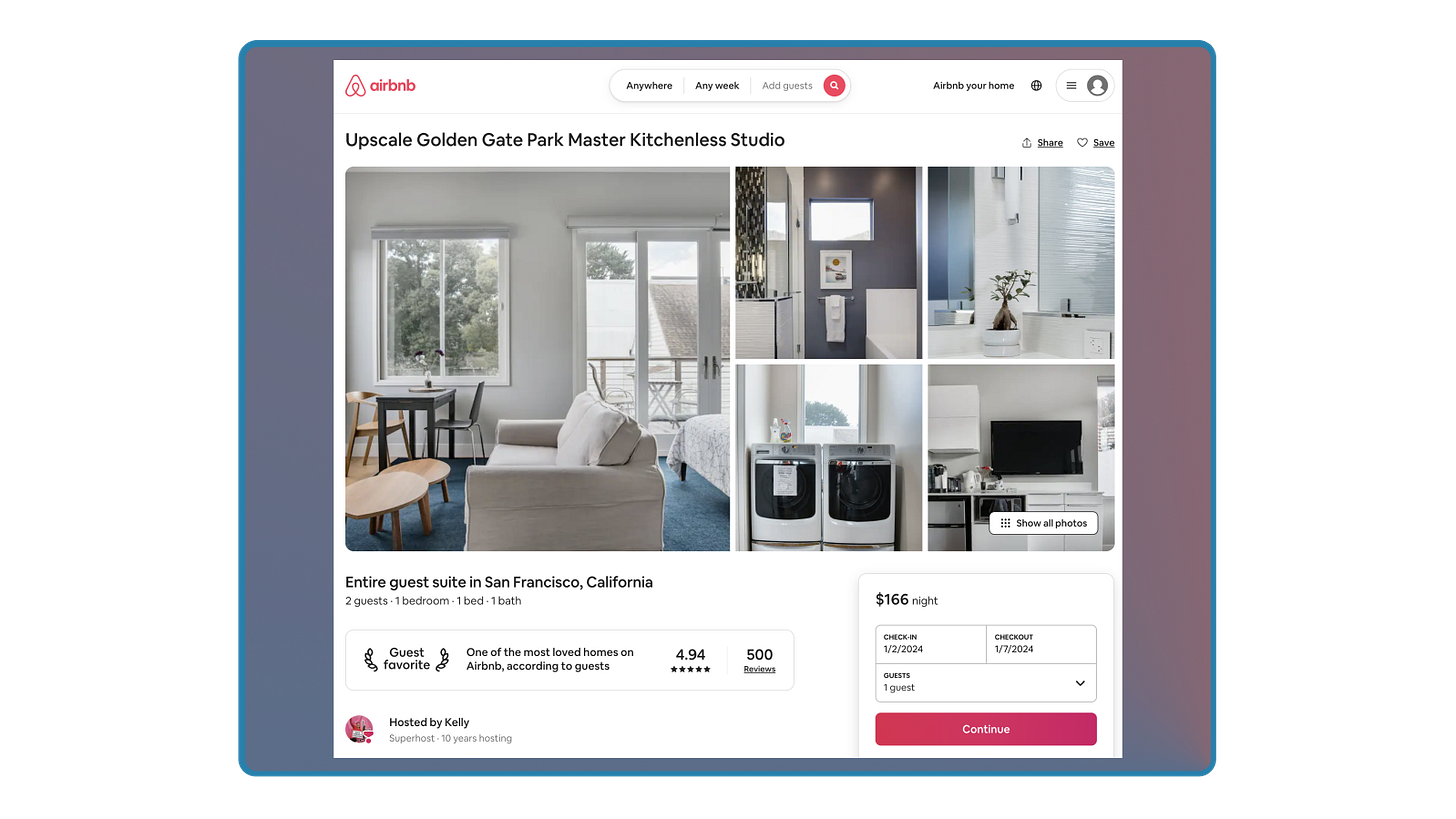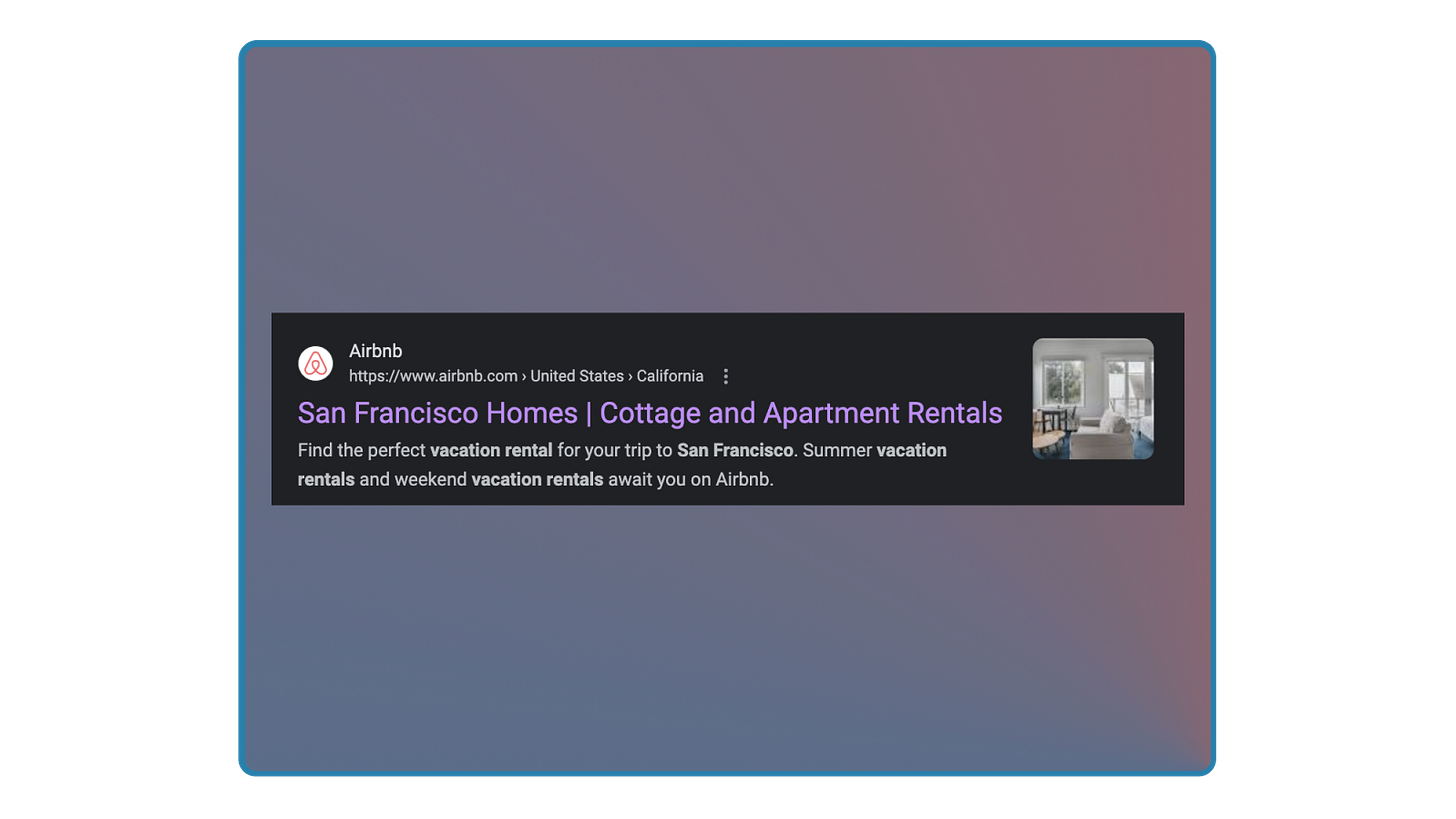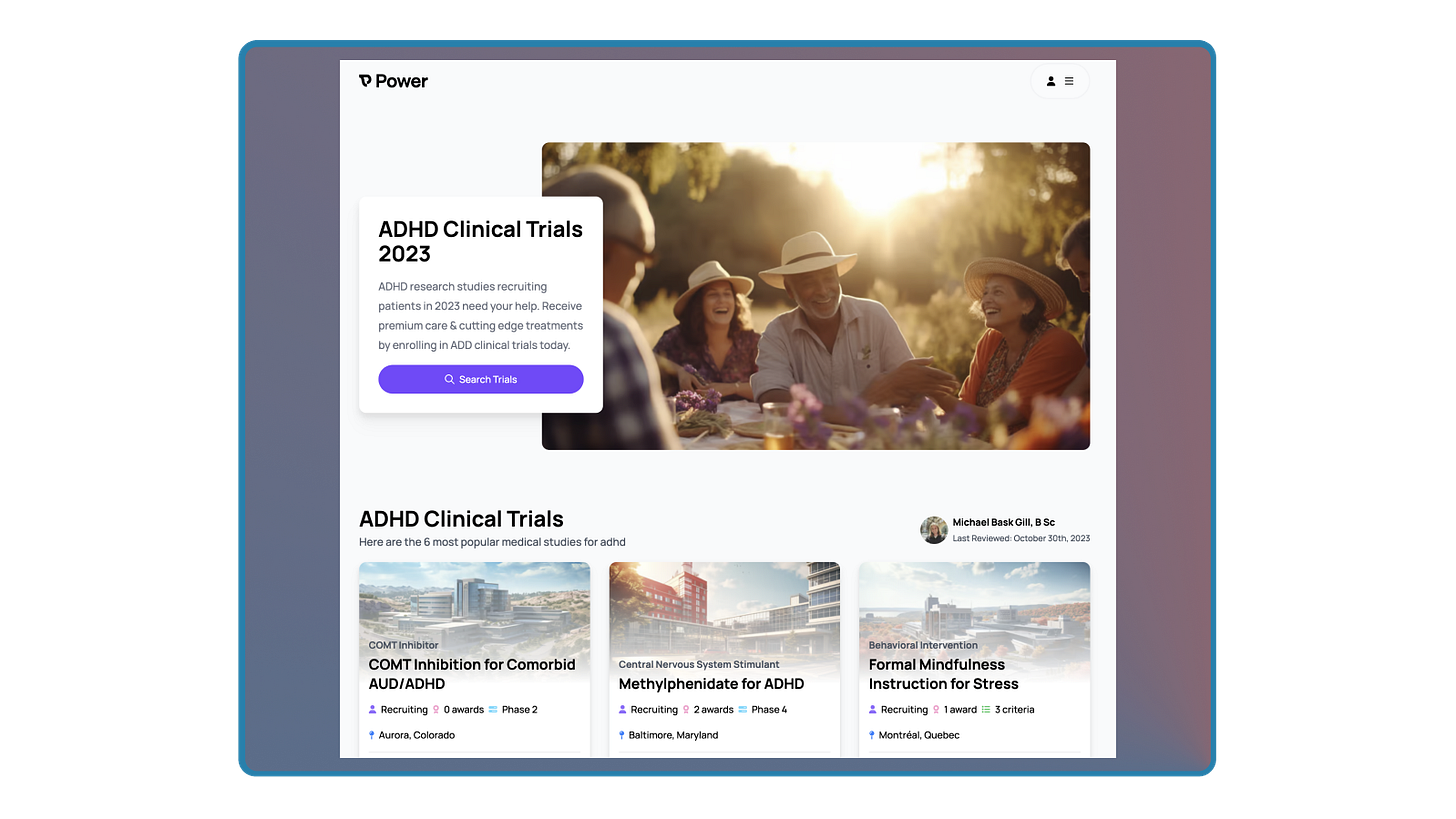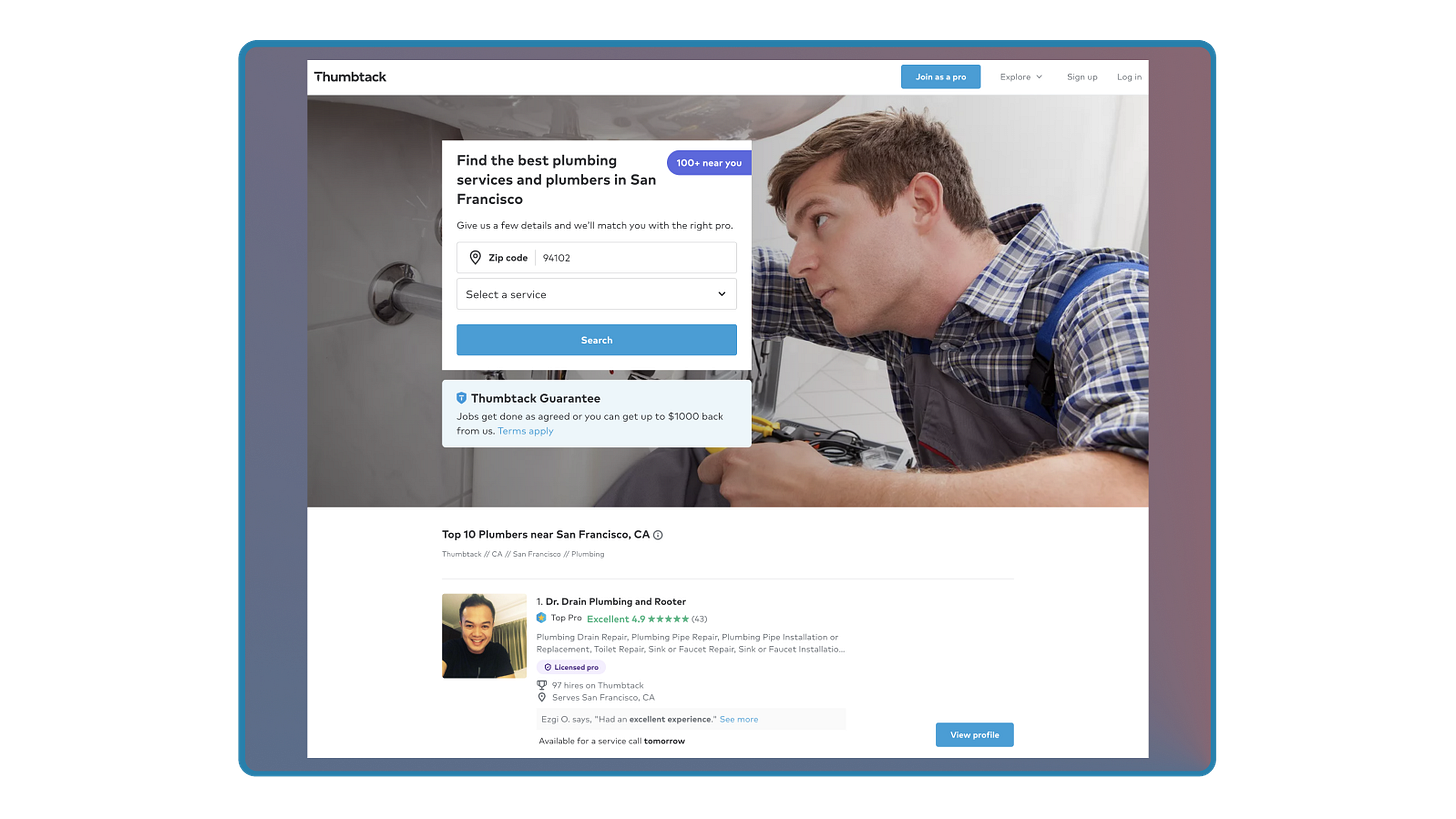A Few of My Favorite Acquisition Loops - Profiles
A walkthrough of the Profile Loop used by AirBnB, Upwork, Thumbtack, Eventbrite, and most successful marketplaces and social networks.
Hi there, it’s Adam. 🤗 Welcome to my weekly newsletter. I started this newsletter to provide a no-bullshit, guided approach to solving some of the hardest problems for people and companies. That includes Growth, Product, company building and parenting while working. Subscribe and never miss an issue. I’ve got a podcast on fatherhood and startups - check out Startup Dad here. Questions about anything? Ask them here.
Today’s newsletter is brought to you by my friends at unitQ. If you’re looking to improve your product discovery this is an amazing product.
unitQ GPT is the world’s first generative AI engine for measuring the quality of your products, services and experiences.
unitQ GPT revolutionizes how product builders, engineers, and support leaders understand user feedback in real time to build superior products, fix bugs faster and resolve support issues at scale. Just ask a question and get an answer based on granularly categorized, AI-driven user insights.
This is a follow up post to the Template loop. In each of these I break down a very specific loop type including why it works, who uses it successfully, when to implement your own, what the limitations are and how to measure it!
If you need a quick overview of what a Growth Loop is take a look at the Template loop newsletter.
The Profile Loop is another one of my favorites. It’s a classic Acquisition Loop that you’ll see being utilized in a lot of the most successful discovery-oriented marketplaces. But marketplaces aren’t the only place where you can leverage this loop; you’ll also find it at some SaaS companies (like Patreon) that have marketplace-like characteristics, and social networks like Facebook and LinkedIn.
The Profile Loop
The Profile Loop is one of the most well-utilized user generated / company (and user) distributed content loops. Much like the template in the template loop the profile in the profile loop is also a piece of user generated content. But unlike the template loop this loop can be successfully spread by the user as well as the company. In fact, in most cases the user has a direct incentive to share because they benefit from the eventual purchase.
Why does this work?
There are a few reasons that this works particularly well as an acquisition loop:
It is ingrained in the platform and scales well
Profiles can be aggregated to create new content
Incentives are aligned with the profile owner
Ingrained in Platform / Scales Well
Unlike templates, which have to be built as a product feature and bolted on, the “profile” is a core part of most marketplaces. In a demand-aggregation marketplace where consumers seek out suppliers, each new supplier who comes onto the platform creates a profile as part of signing up for the service. That profile can then be indexed by Google.
This is a rental profile at AirBnB:
These profiles are created for every single rental property in AirBnB’s self-serve marketplace.
The same is true for an events marketplace like Eventbrite; with one major limitation – events have end dates.
While I’m sure the Burlingame High School Winter Concert is a fantastic event, the usefulness of this page after Wednesday, December 6th declines rapidly. Any time-bound “profile” page will struggle with this challenge which is why aggregation becomes so important.
Profile Aggregation
This concept is when you group a set of similar profiles under a common, canonical page based on a common attribute. Examples of this are:
Location based pages - e.g. “Events in Oakland, CA,” or “Rental Properties in San Francisco.”
Topically relevant pages - e.g. “ADHD clinical trials”
Profile Category - e.g. “Graphic Designers”
Or, some combination of across multiple dimensions, like location and category - e.g. “Plumbers in San Francisco.”
Profile aggregation also scales very well. Once you create an aggregation page with some logic on what to include each new profile page that is created will be added to that aggregation page. In this way companies are able to extend the usefulness of the individual profile across many new dimensions.
Incentive Alignment
In addition to the ingrained nature of the profile and the power of aggregation, the third important property of the profile loop is that incentives are aligned with the page owner.
In the case of an AirBnB host, an Eventbrite organizer, a Patreon creator, or a LinkedIn bio the incentive exists for the page owner to want to share their profile with others. For the first three, sharing your profile ties directly to revenue – bookings, ticket purchases, or memberships. For a network like LinkedIn the bio has become the default resume for most.
This has the added benefit of increasing inbound link activity—everyone linking to their AirBnB profile or their Patreon profile from another, external site—which helps improve the overall rank of the profiles. This turns the company distributed loop into both a company and user distributed loop.
For example, I link out from my own site (adamfishman.com) to LinkedIn because I think LinkedIn does a better job of organizing my professional information than I have the time to do myself. As a result, LinkedIn appears higher than my own website when I search “Adam Fishman.”
You win this round LinkedIn.
When to Leverage the Profile Loop
It should probably go without saying that if your product doesn’t lend itself to having a public user (supplier, purchaser, etc.) profile then there’s no point in creating one or at the very least making it indexable. For example, Lyft and Uber don’t have public, searchable profile pages even though they do have rider and driver profiles. The profiles are necessary for the trust and safety of the service as well as retention, but aren’t leveraged as an acquisition loop.
The question then becomes: when is it worth the SEO effort necessary to set up this loop successfully?
That effort is worth it if the profile or the aggregation of profiles is a meaningful vector for search, discovery and purchase. In the case of Lyft or Uber, it’s not. You’re not going to search for a specific driver and (currently) there is no means by which to book a specific one. You don’t care about an aggregation of all of the drivers in a particular city because the marketplace doesn’t offer you a booking choice and dispatch is handled algorithmically in real-time.
But with plumbers in San Francisco, pet sitters in London or a specific clinical trial this matters a lot. Take the case of WyzAnt - tutoring marketplace I worked for many years ago that is now part of IXL learning. Search was the dominant way that people discovered WyzAnt (at least 60-70% of acquisition came via search) and within that it was through terms like, “Algebra Tutor In Oakland, CA.”
There’s also a decision to make around just how public you want the public profile to be—we’ll get into that in the next section.
Risks and Limitations
There are a few risks and limitations to the profile loop.
Limitations
Let’s start with the most obvious one: competition.
For popular categories the competition for indexing / ranking profiles and aggregation pages is fierce. Take a look at the search results for “Babysitters in San Francisco.” Good luck getting started in this category 😬.
As a result of competition, another limitation of this loop is its speed. By that I mean the speed at which you can set up this loop. This isn’t a loop you can stand up in an evening. It takes months (in some cases, years) to get the profile loop to grow to a meaningful acquisition source.
A third limitation is the maximum scope of the loop. While it can take awhile to reach this ceiling, once you’re ranking #1 for all of the most significant, profile-based queries, where do you go from there? You’ll only continue to grow this loop at the rate that the query volume expands so by then you had better be prepared to sequence into another loop.
Risks
I’ve seen a few risky approaches to building the profile loop that I wanted to caution you against.
First is creating profiles for people who aren’t on your platform. As an example, one suggestion that I received while at Patreon was to pre-create pages for many creators who we wanted to see launch on the platform and even hold patronage “in escrow” for those creators to claim. We never did this because, while it could have been successful, the risk to our reputation within the creator ecosystem was too great. I recently experienced this as someone created a profile for me on a new platform that I didn’t want to manage. It didn’t feel great and I’m glad we never did it at Patreon.
The second risk, similar to the above, is fake profiles. In order to give the illusion of liquidity, attempt to solve the cold start problem and start the profile loop. This might work in very small doses, but falls apart once people try to use your platform. Don’t do it. The reputational risk is too great.
The third risk, platform risk, exists for all of the SEO-driven loops. Google has routinely demonstrated that they want to keep people on the results page(s) and this will only get worse with AI. Be wary of placing all of your eggs in Google’s basket!
Measuring the Profile Loop
To effectively measure the Profile loop, similar to the Template loop, you need to break it down into the steps of the loop and the actions/formulas that connect each step.
User signs up for your platform.
User activates and publishes a profile page.
User shares profile page with others.
New user signs up for the platform (return to 1).
That profile page is added to the corpus of all other profile pages.
Profile page is aggregated in a series of other pages.
Pages (re)indexed by Google to appear in search results.
Want to see this in action? Leverage this template.
Wrapping It All Up
The user generated / company (and user) distributed profile loop is a scalable and effective loop for many marketplaces and social networks. Companies like AirBnB, Upwork, Thumbtack, LinkedIn, Eventbrite and even Patreon have leveraged this loop to great success.
In order for this loop to work for your business you’ll need to make sure that the profile is a critical path in search, discovery and conversion; that it makes sense to expose the profile publicly, and that you have dimensions you can aggregate to create new profile rollup pages.
What other companies have great profile loops? Share with me in the comments below!

















I appreciated the points made in the 'Risks' section, specifically concerning 1) creating profiles for people who are not on your platform, and 2) having fake profiles to maximize liquidity. Do you think the reputational risk is the same when the profiles are for companies, instead of individual creators, as you described in your example?
In the situation I am considering, engagement is nurtured in relation to publicly available content about a company.